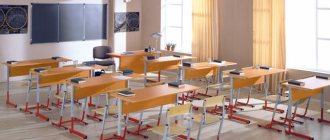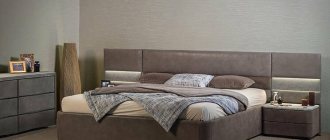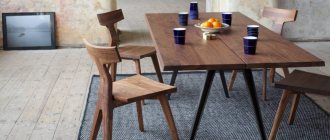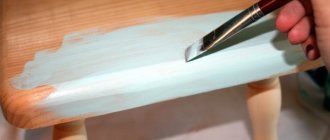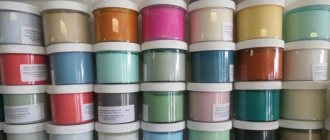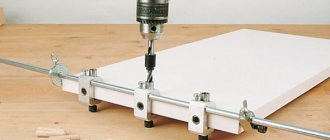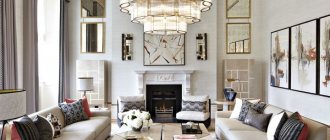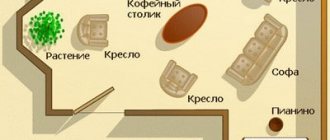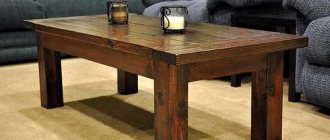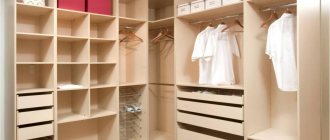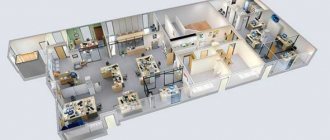Play furniture for kindergarten is the most important and necessary attribute in the interior of the institution. It allows the child to explore the world around him, try on different “adult” roles and develop comprehensively. In order for the gaming experience to be comfortable and safe, such structures must meet a number of requirements, for example, to be reliable, safe, and durable. We bring to your attention stylish, varied and original furniture for use in the playroom! Our catalog contains a huge number of product items at affordable prices.
Kinds
Designers offer “professionally oriented” furniture for playrooms, complexes of several modules, made in accordance with the age characteristics of children, promoting motivation for play activities - taking on roles, performing algorithms:
- for girls you can find kitchens, hairdressers, dressing rooms, doctor's offices, store counters;
- for boys in the children's room, play furniture for kindergartens is produced in the form of transformer modules, from which children can jointly assemble a car, or the walls of a fortress - actively interact with it.
All furniture in a kindergarten, for outdoor or indoor use, must comply with a whole list of sanitary and hygienic requirements and be safe for students.
The choice of children's play furniture for kindergartens when planning an area is carried out in accordance with the requirements of the Federal State Educational Standard, based on the age of the pupils and the number of children in groups. An important role in the arrangement process is played by the opinion and initiative of parents - part of the furnishings can be done with your own hands, subject to compliance with all standards.
Children's toy furniture involves arranging corners for role-playing games. Here, toy houses become an integral part, in which children can learn socially significant skills in a playful way. At the same time, not only girls, but also boys can play in the houses - the latter are often assigned the role of guests coming for tea. The boys' "house" can be stylized as a garage or a captain's bridge.
You can divide play furniture for kindergarten into the following categories:
- outdoor - houses, modules with swings, slides, sandboxes;
- for interior spaces - plastic houses, tents, role-playing modules, transformer modules.
In the first case, the structures are static. Made from impact-resistant, moisture-resistant materials - wood, plastic and metal structures. Materials are painted in bulk or using special impregnations, wood or metal paints.
In the case where children's furniture is intended for use in a group, it can be made:
- with a rigid, static frame;
- in the form of collapsible modules;
- children's soft play furniture, from which pupils can build sofas, cars, boats, and other furnishings.
Furniture items also take into account the possibility of storing children's toys.
For the street
For kindergartens, outdoor children's play furniture is designed primarily to meet children's needs not only for communication and interaction, but also for physical activity. Manufacturers offer entire complexes made in accordance with the requirements of SanPin, environmental safety and the characteristics of the psychophysiological development of preschool children. If parents take on the task of organizing playgrounds and want to set up a playground with their own hands, you need to enlist the support of a specialist who is knowledgeable about safety standards and requirements. This means that play furniture as in the photo must have the following qualities:
- stability, reliable fixation on the ground. Children's temperament is activity, mobility, a desire to experiment, to shake the structure. Whether it’s a slide, a swing, or a section with a basketball hoop, the module must remain motionless and prevent the structure from falling;
- the absence of sharp corners is another important factor in preventing injuries;
- the material used is impact-resistant, guaranteed to withstand the declared weight load;
- the design must have comfortable non-slip steps and railings, reliable fences;
- decorative, movable elements are securely fastened. Joints, hinges, bearings are closed to prevent pinching of clothing, child’s skin, fingers;
- surfaces are easy to clean if necessary, resistant to sanitary treatment.
Outdoor play furniture for children will become a real field of miracles if you choose and install it wisely. When installing swings, houses, and slides, adults should remember that, despite manufacturers’ assurances about the safety of the products, children should play outside under the supervision of teachers.
For indoors
Furniture for a children's playroom, according to the recommendations of the Federal State Educational Standard, should have multifunctionality, the ability to modify the environment and contribute to the development of spatial perception, motor skills, and imagination. While serving as a toy, furniture must remain a reliable and safe piece of furniture:
- Manufacturers make transformable tables, chairs, racks for toys, “hair salon” and “doctor’s offices” modules for girls, garages and ships, houses for boys from high-quality, certified materials - natural beech, laminated chipboard, bent plywood;
- the metal frame is coated with polymer powder paint;
- Water-based varnish is preferred as a coating;
- products made from wood panels or plastic must be odorless, without any harmful substances that can cause illness to children in the room or cause allergies;
- sharp corners are contraindicated - the outlines of the parts should have rounded protruding parts;
- Children's furniture may contain drawers, sections for toys, while all parts are securely fixed, and fasteners are securely closed with plugs. No protruding nails or screws.
Children's soft play furniture consists of modular elements with which a child can build a house, a car or design another object. The various designs and shapes of such modules allow children to find replacement toys and gain a wide variety of experiences.
Upholstered furniture for kindergartens, used as play furniture, can be of 3 types:
- frame - the product is based on a frame made of metal or wood filled with foam rubber, which is covered with fabric on top. Flock is often used for these purposes - it is abrasion resistant and easy to care for;
- frameless or filling type - similar to the well-known bean bag chair. Penoplex as a filler allows you to give such a module a bag absolutely any shape. For children, such a product provides real scope for imagination and experimentation. This option is easy to manufacture and parents can make such modules with their own hands;
- soft-filled - here, in addition to foam rubber, vinyl artificial leather is used. The material is easy to care for, does not stretch, and is economical in cost.
There are modifications equipped with wheels for movement. This could be furniture in the shape of animals, which the child can ride on while sitting astride. At the same time, the elastic upholstery will reliably soften the blow in the event of a fall.
Play areas
The arrangement of a play space in a kindergarten should include the following points:
- opportunity for outdoor games - there should be enough space for children to be active;
- furniture for role-playing games. This includes houses, “kitchen” type complexes, where there are kitchen utensils, sets of dishes and products, a toy medical office, a hairdresser, a store - or a colorful rack with a window that can become a pharmacy or a post office;
- racks and containers for toys. After all, one of the important functions of the play area is to teach children order;
- special boards or sections of the wall with a washable coating on which students can draw.
When organizing your space, you should take into account that boys can be more active than girls. Children should not interfere with each other while playing.
Playhouses
Manufacturers of play furniture offer a large selection of houses for children of different ages. These can be “home” and outdoor structures. Most of them are easy to assemble, so even girls can handle the device. This is important, because they are often the ones who make up the kindergarten staff:
- For younger children, inflatable models are recommended. There are no sharp corners here; the floor acts as a trampoline. Children will happily run and frolic inside such a house. Another option is a tent house in the form of an Indian wigwam or a fairy-tale tent. The disadvantage of such options is their lightness and instability. With high activity, children can turn it over;
- houses made of cardboard - suitable for older preschoolers. These structures can be painted, giving the house the look of your choice;
- plastic structures - quite compact in size for indoor use; street options are larger, may have 2 floors, extensions in the form of slides, ropes, ladders or swings;
- wooden houses - used outdoors, they can become a smaller copy of a log house or tower.
When giving preference to a house model, be sure to take into account the conditions of its use, the age of the pupils, and their needs. Will it be a compact model or a spacious option with space for toys. For mixed groups, it is better to choose a universal design that is suitable for boys and girls playing.
Didactic games
Pictures on the topic of furniture for children are often used as visual material for educational games. Their range is varied. Such fun is aimed at the overall development and development of the child as a person.
- “What will this be needed for?” The child needs to correctly name the piece of furniture in the picture and describe its purpose (what they do with it in everyday life, where it can be placed).
- "Find the odd one out." A radically different image is specially added to one of the groups of pictures (by purpose, location, color, size). The child is given the task of determining what is superfluous.
- "Get things in order." In front of the child is a diagram of an apartment with different rooms and chaotically laid out pictures of furniture. The goal is to arrange the furniture in its place, as is customary in real life.
- "Part of an object." In all pictures, the furniture is shown without a certain element (the back of a chair, the armrest of a chair, the leg of a sofa, etc.). Children need to point to the missing part and name it.
- "What common". The task is to find common characteristics among different furniture (elements - legs, backs, etc., or color, shape, material).
- "Find the difference." Children need to find differences in pieces of furniture similar to the previous game.
- “What is this item?” It is required to describe certain furniture with various epithets. Give it a detailed description using adjectives. You can arrange a competition between subgroups of children. The team that comes up with the most characteristics wins.
- “Put it all together.” It is necessary to assemble a piece of furniture from puzzles, an entire furnished room. If there are two identical sets of puzzles, older children can compete in the speed of completing the task.
- "Shop". A child can make a conditional purchase of a headset only if he correctly pronounces the name of the furniture in the picture.
- "Repair". In all pictures, the furniture is shown without a certain element (back, legs, seat, armrest). Children need to name the missing part, what it can be made of and what tools are needed to repair it.
- "What is this". The child needs to recognize and name the furniture based on individual parts of the set.
- "Big small". Invite the children to compare the furniture in the two pictures and determine which is larger and which is smaller.
- “Name all the pieces of furniture.” The image contains chaotically placed furniture, dishes, plants, things, etc. Children find and name only furniture.
- “How this furniture is made.” The child should reproduce the sequence of actions when making an object. To do this, you need to prepare a manual diagram that shows: the material, the manufacturing process, tools and the furniture itself.
- "In our house". The task for kids is to list all the pieces of furniture that they have at home (by room).
If you prepare a variety of pictures of furniture for children, you can come up with any didactic fun on your own. Invent your own unique gaming method of teaching and developing children.
Manufacturing materials
A wide range of materials are used to produce play furniture intended for kindergartens. Moreover, regardless of the type, the base must be environmentally friendly, safe and wear-resistant to ensure high-quality operation of the products.
| Material type | Purpose | Examples of using | Advantages | Flaws |
| Tree | Outdoor structures/furniture for play areas. | Playhouses, swings, sandboxes. Shelving, modules. | Eco-friendly, in the case of the house, well ventilated, durable. | Requires regular painting and treatment with impregnations when used outdoors. |
| Plastic | Outdoor designs, indoors. | Playhouses, swings, sandboxes, slides, modules. | Eco-friendly, low maintenance, impact resistant, can be easily assembled and disassembled. | At low temperatures (-18o C) deformation may occur. |
| PVC | Street/room. | Playhouses, trampolines, slides, tunnels. | Light, elastic, no sharp corners, bright, children like them. Suitable for younger ages. | If the quality of the material is poor, there may be an unpleasant odor and the release of allergens. |
| Chipboard, MDF, laminated chipboard | For premises. | Shelving, modules, frames. | Economical, strong material, wear-resistant. Ability to produce the most complex designs. | May release harmful substances if production technology is violated. |
| Foam rubber, polystyrene foam | Interior premises. | Fillers for upholstered play furniture. | They provide high-quality upholstery of the frame and maintain its shape. | They have a certain service life. Then they must be replaced. |
The production of furniture for preschool institutions is strictly regulated. Manufacturers undertake to follow established GOST standards and have on hand documents confirming the quality and safety of the materials used.
PVC Solid
Plastic chipboard
MDF
Foam rubber
Requirements for children's furniture
Children's furniture used to equip the play area in a preschool institution must meet the standards established by GOST, be environmentally friendly and comply with SanPin recommendations. When purchasing products, all necessary accompanying documents and certificates must be attached:
- the surfaces of objects should not have burrs, sharp corners, or protruding fasteners;
- all fasteners are securely fixed and hidden with cuffs and plugs;
- paint coating in pleasant shades, no smell or marks on clothes or skin upon contact;
- all edges are carefully processed;
- furniture should be multifunctional, ideally helping to save space, which is important in small spaces;
- designs should take into account the age characteristics of children.
Furniture design is important. It should be attractive to children, motivate them to play and manipulate module objects.
Pictures of furniture
At the moment of visual acquaintance with such material, children learn to recognize pieces of furniture. Pronounce their names accurately. Additionally, they gain skills in comparing quantities and proportions.
Pictures on the topic of furniture for children of senior preschool age are motivating material for the development of artistic taste. They help you learn to think figuratively, describing interior items in detail.
Selection rules
Today the market offers a lot of options for gaming furniture. When choosing complexes and modules for arranging a play area in a kindergarten, follow the following rules:
- the manufacturer must have a good reputation and reviews. Ideally, it should specialize exclusively in the production or supply of children's furniture. In this case, it is likely that the seller is well aware of the specifics of the activities and requirements for equipping preschool institutions;
- make sure that the selected products have quality and safety certificates;
- the chosen design must correspond to the age group and psychophysiological development of children;
- if it is not possible to purchase separate options for girls and boys, opt for the universal option;
- check the package contents, request detailed instructions for installation and operation of the structures;
- give preference to items that you can provide proper care for.
Selected taking into account all the criteria, play furniture will be an excellent source of creativity and imagination for students. Children will enjoy playing and transforming the space, using the capabilities and features of the designs.
Primary requirements
When choosing furniture for a kindergarten, the following factors must be taken into account:
- meeting safety requirements;
- Ease of use;
- practicality;
- design.
Compliance with safety lies in the requirements for the material from which furniture for a kindergarten can be made. It must be made of wood without paint coatings containing toxins. It can be oak, birch, pine, E1 class chipboard, plywood. Loose fastenings and sharp corners can also be a source of danger.
Cribs and lockers should be comfortable to use, that is, suitable for the age, height, and other physical characteristics of the children. If this factor is not taken into account, then health problems (postural curvature) and injuries are possible.
GOST has developed sizes for each age.
| Age | Length | Width | Height of the fence from the floor | Height from floor |
| Up to 3 years | 120 cm | 60 cm | 95 cm | From 30 to 50 cm |
| From 3 to 7 years | 140 | 60 cm | — | 30 |
Some pieces of furniture in the garden are common to everyone. But there are those available for the use of every child. This is an individual locker, bed.
The child needs to be taught how to use every thing safely, take care of it, explain what and how it functions. If from childhood you are taught to maintain order and to treat surrounding objects with care, then it will become easier for children to move forward with a developed sense of order and thrift. You need to start with furniture for a kindergarten, a corner of nature, with a toy house.
